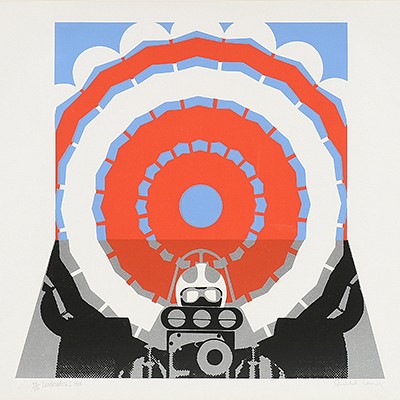A PAIR OF ANGLO INDIAN "BOMBAY BLACKWOOD" FILIGREE SLIPPER CHAIRS, 1850-1890,
About Seller
6116 Skyline Drive, Suite 1
Houston, TX 77057
United States
Simpson Galleries has been serving Houston’s need for the very best in antique sales venues for more than fifty years. Beginning in 1962, William Simpson started educating himself and others in the art of collecting fine antiques and art objects. Simpson Galleries' commitment to excellence and accur...Read more
Two ways to bid:
- Leave a max absentee bid and the platform will bid on your behalf up to your maximum bid during the live auction.
- Bid live during the auction and your bids will be submitted real-time to the auctioneer.
Bid Increments
| Price | Bid Increment |
|---|---|
| $0 | $25 |
| $500 | $50 |
| $1,000 | $100 |
| $2,000 | $250 |
| $5,000 | $500 |
| $10,000 | $1,000 |
| $20,000 | $2,500 |
| $50,000 | $5,000 |
| $100,000 | $10,000 |
| $200,000 | $25,000 |
About Auction
Feb 6, 2021
Fine Art & Antiques - featuring works from the estate of prominent collector David E. Brauer. Simpson Galleries online_auctions@simpsongalleries.com
- Lot Description
A PAIR OF ANGLO INDIAN "BOMBAY BLACKWOOD" FILIGREE SLIPPER CHAIRS, 1850-1890, the pierced rosewood backs centering a lion beast spewing leaves within a bead chain medallion issuing concentric lotus blooms, ivy wreath, and "S" scroll vines perched with affronted birds, at top a rosette issues a bellflower wreath, while long tailed birds search for hidden berries amongst densely packed leaves, below curved seats fit within a berry and leaf vine gallery, the cushion now upholstered in celadon green velvet with matching pipe trim sits atop a canopy skirt, the whole raised on legs of totem form with celestial star frogs issuing a cage of vines, and below a bird with star beak stands atop the nose of a beast, a front arched skirt echoes the central lion beast medallion, the back carved with like motif, but raised on animal feet in the form of a lion with flaming mouth and fruiting chest above a bird riding a fish, a totem of beasts representing the water, sky, and earth, raised on casters. Height: 32" Width: 20" Depth: 24" Note: This particular style of furniture originated in an area of west India known as the Bombay Presidency, best described as the colonial seat of power for British India, which was established as early as the 17th and 18th centuries. Popularized in the 1850s, "Bombay Blackwood" furniture swept the latter half of the Victorian era as a furniture of distinction, having considerable influence on the posh interior design of the late 19th century. The profusely carved furniture was found in the port of Bombay (now Mumbai), where traditional Parisi shipbuilders began producing furniture for export to the European and American markets, hiring woodcarvers from rural cities like Ahmedabad and Surat in the northerly state of Gujarat. In the northern Gujarati taste combined with European Rococo Revival elements; the form of the chair is overall a balloon back, however, the low seat suggests that it would serve most likely as a slipper chair. Unusually, Alexander Jolliffe, Upholstery Conservator Trainee at the V&A, writes about a photograph at the Victoria & Albert Museum titled, "Hindu gentleman with a prie-dieu chair," suggesting perhaps a different interpretation of the function of the seats. Regional talents combined traditional Indian carving with modern (at the time) English chairs, producing remarkable furniture works of art.Some cracks along the grain, mild losses, old repairs, reupholstered, dust, some losses at seat gallery, expected wear and overall in good to very good condition, wear commensurate with age and use. Simpson Galleries strongly encourages in-person inspection of items by the bidder. Statements by Simpson Galleries regarding the condition of objects are for guidance only and should not be relied upon as statements of fact and do not constitute a representation, warranty, or assumption of liability by Simpson Galleries. All lots offered are sold "AS IS." NO REFUNDS will be issued based on condition.
Condition
- Shipping Info
-
**SIMPSON GALLERIES, LLC. DOES NOT PROVIDE SHIPPING SERVICES OR SHIPPING QUOTES.** Shipping may be secured through - The UPS Store: auctions@epicpartnershipco.com 281-764-9551, The UPS Store: store1733@theupsstore.com 713-942-7775, PACK-N-SEND: sales@pack-n-send.com 713-266-1450, ACTS Crating and Transportation Services: crating@actsintl.com 713-869-2269, NAVIS Pack & Ship: 17013tx@gonavis.com 713-352-3038, A Better Mover Inc: travis@abettermoverinc.com or abettermover@yahoo.com 404-754-0111, or the shipper of your choice. We are open for shipper pick-up Tuesday - Thursdays from 10 am to 3 pm or by appointment.
-
- Buyer's Premium



 EUR
EUR CAD
CAD AUD
AUD GBP
GBP MXN
MXN HKD
HKD CNY
CNY MYR
MYR SEK
SEK SGD
SGD CHF
CHF THB
THB



























